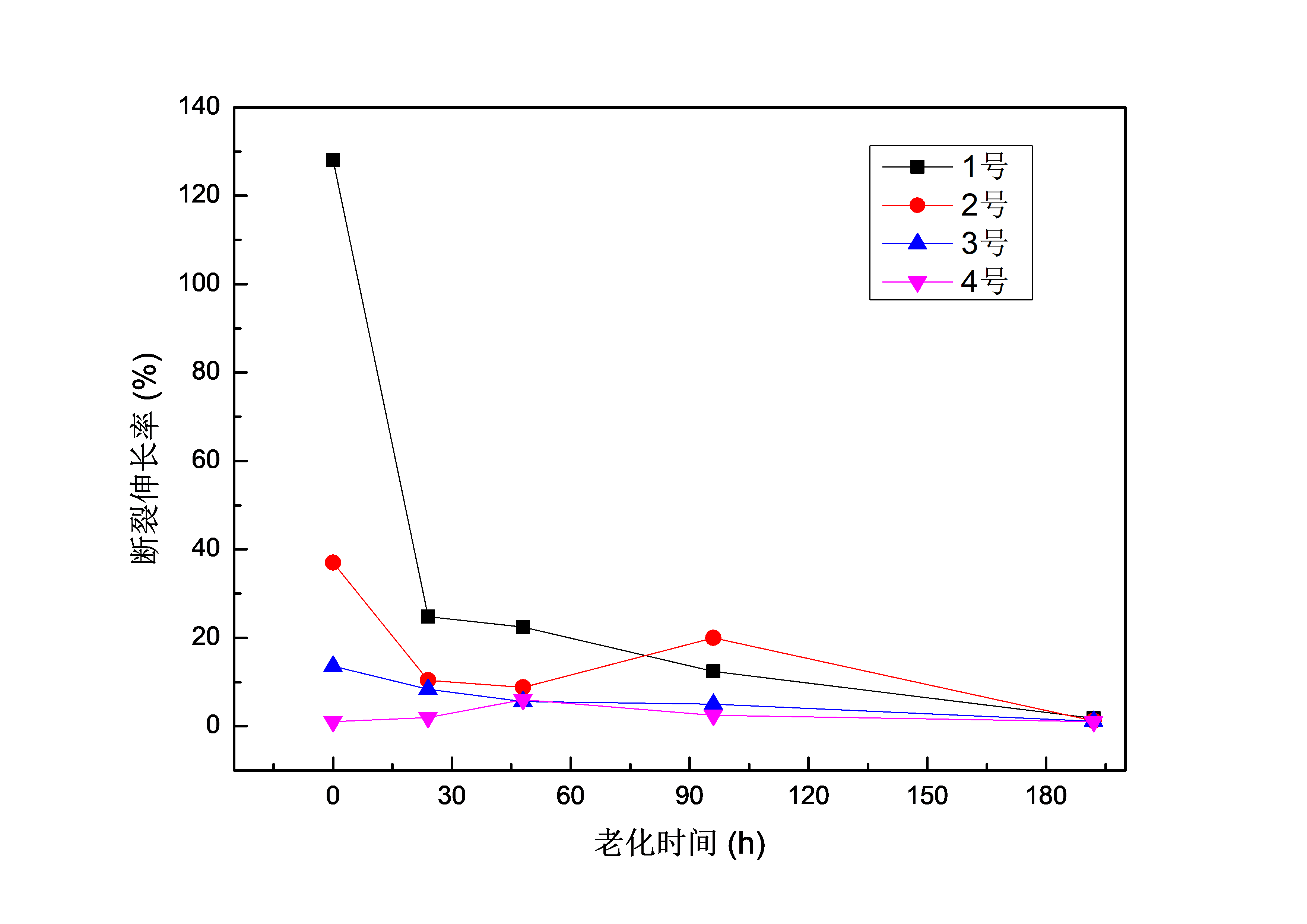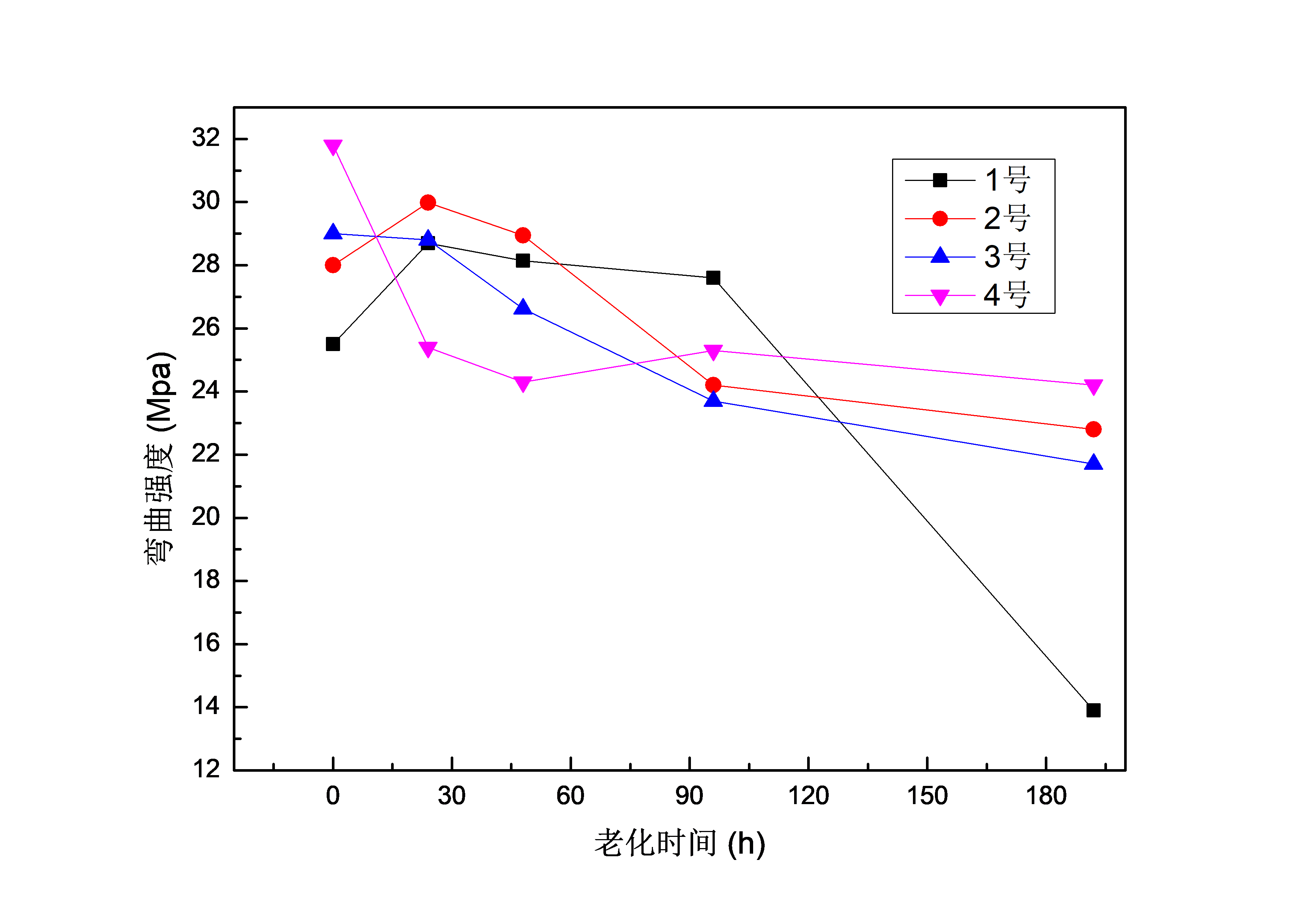R-PPR-PET共混物的热氧老化性能研究毕业论文
2020-04-22 19:36:34
摘 要
随着社会的发展和消费的升级,废旧塑料回收再利用的问题摆在了人们的面前,本论文针对回收PP和回收PET的再利用,研究了两者共混物的热氧老化行为,并通过添加热稳定剂来提高其热稳定性。通过双螺杆熔融挤出制备了R-PP/R-PET共混物,采用热氧老化箱、微机控制电子万能试验机、塑料摆锤冲击试验机和热重分析仪研究了热氧老老化对共混物的力学性能和共混物的热稳定性能影响。试验结果表明:当回收PET用量超过20%时,该共混物在120℃下热氧老化192小时后拉伸强度和冲击强度下降趋势有明显的加快。PP-g-MAH、EPDM-g-MAH和POE-g-MAH三种相容剂中,EPDM-g-MAH不仅能够改善R-PP与R-PET两者之间的相容性,使共混物达到部分相容,而且有效的提高了共混物的热稳定性。复配热稳定剂的添加,增强了共混物的热稳定性,最高分解速率温度推迟了22℃,同时通过阿伦尼乌斯方程推算共混物的使用寿命为2742h,大约为103d。
关键词:R-PP/R-PET共混物 相容剂 热氧老化 推算寿命
Thermo-oxidative aging properties of R-PP/R-PET blends
abstract
With the development of society and the upgrading of consumption, the problem of recycling waste plastics has been put in front of people. In this paper, the thermo-oxidative aging behavior of recycled PP and recycled PET blends has been studied, and their thermal stability has been improved by adding thermal stabilizers. R-PP/R-PET blends were prepared by twin-screw melt extrusion. The effects of thermal aging on the mechanical properties and thermal stability of the blends were studied by using thermal aging chamber, computer controlled electronic universal testing machine, plastic pendulum impact testing machine and thermogravimetric analyzer. The results showed that the decrease of tensile strength and impact strength of the blends was accelerated with the increase of R-PET content. Among the three compatibilizers of PP-g-MAH, EPDM-g-MAH and POE-g-MAH, EPDM-g-MAH can not only improve the compatibility between R-PP and R-PET, and make the blend partially compatible, but also effectively improve the thermal stability of the blend. The addition of compound heat stabilizer enhanced the thermal stability of the blend. The maximum decomposition rate temperature was delayed by 22 C. Meanwhile, the service life of the blend was estimated to be 2742h, or about 103d by Arrhenius equation.
Key Words: R-PP/R-PET Blends;Compatibilizer;Thermal oxidative aging; Estimated life span
目录
摘 要 I
abstract II
第一章 绪论 1
1.1前言 1
1.2高分子老化 1
1.2.1 影响老化的因素 1
1.2.2热氧老化 2
1.3 PP和PET老化研究进展 2
1.3.1 PP和PET概述 2
1.3.2 PP和PET的老化机理 4
1.3.3 国内外PP/PET老化研究进展 6
1.4相容剂、抗氧剂简介 7
1.4.1相容剂种类 7
1.4.2抗氧剂种类 8
1.5聚合物寿命预测方法 10
1.6本课题研究目的、内容和意义 11
第二章 实验部分 12
2.1实验原料及主要实验设备 12
2.1.1 实验原料 12
2.1.2 实验仪器 12
2.2实验准备 13
2.2.1实验前期准备 13
2.2.2试样准备 13
2.2.3 试样制备 14
2.3实验方案和测试 14
第三章 结果与讨论 15
3.1不同R-PET用量的R-PP/R-PET共混物热氧老化性能研究 15
3.1.1不同PET用量的R-PP/R-PET共混物120℃热氧老化后拉伸性能 15
3.1.2 不同PET用量的R-PP/R-PET共混物120℃热氧老化后弯曲强度 17
3.1.3 不同PET用量的R-PP/R-PET共混物120℃热氧老化后冲击强度 18
3.2相容剂种类对R-PP/R-PET共混物热氧老化后力学性能的影响 19
3.3 R-PP/R-PET/EPDM-g-MAH共混物热氧老化寿命研究 21
3.3.1不同温度对R-PP/R-PET/EPDM-g-MAH共混物热氧老化后力学性能的影响 21
3.3.2R-PP/R-PET/EPDM-g-MAH共混物TG-DTG曲线 24
3.3.3阿伦尼乌斯方程推算R-PP/R-PET/EPDM-g-MAH共混物使用寿命 25
第四章 总结 29
参考文献 30
致谢 33
第一章 绪论
1.1前言
现在日常生活中,常用的高分子材料一般分为塑料、橡胶、纤维和涂料这四大类[1],由于高分子材料的出现,慢慢的人们发现高分子材料的性能要远比其他三大材料要好的多,在现实生活中被广泛运用于建筑业、汽车制造业和食品领域,是我们日常生活中不能缺失的材料。就目前来说我们依旧使用传统的高分子材料,一般来说高分子的使用寿命很短。如何让高分子材料使用寿命增长一直是我们研究的课题,如果研究成功将会对我们日常生活有巨大的影响。
1.2高分子老化
相关图片展示:







您可能感兴趣的文章
- 在200至300℃的温度下纤维素的水热降解外文翻译资料
- 对O-酰基肟光敏交联剂和丙烯酸丁酯组成的压敏胶一系列光聚合与光降解过程的直接流变学测量外文翻译资料
- 热和紫外线诱导的环氧/环氧丙烯酸酯胶粘剂的制备及其性能外文翻译资料
- 基于光敏可逆固液转换的可调光聚合物胶粘剂外文翻译资料
- 氢氧化物-催化键中近红外吸收的时间演化外文翻译资料
- 利用糖辅助机械力化学剥离技术一步法制备功能化氮化硼纳米片外文翻译资料
- 用于热管理的具有优异力学性能和超高热导率的兼容多功能氮化硼纳米片/聚合物薄膜外文翻译资料
- 油水分离材料用凹土棒复合微球的制备与表征油水分离材料用凹土棒复合微球的制备与表征外文翻译资料
- 单轴拉伸聚乙烯/氮化硼纳米复合薄膜金属状热导率外文翻译资料
- 高导热硅弹性体掺杂石墨烯纳米片和低共熔液体金属合金外文翻译资料




